Purify Tallow for Soap Making
When I decided to learn to make soap, I knew from the beginning that I wanted to create a basic soap recipe that utilized the often maligned soap-making fat, tallow. I would also have to learn how to purify tallow for soap making first.
Tallow soap has a bad reputation and I don’t believe a word of it! Especially now that I’ve used it on my own skin and have absolutely fallen in love with that soap! It is everything I wanted in a bar of soap… an ultra-moisturizing hard soap with a rich and creamy lather that doesn’t turn into a slimy bar that dissolves away quickly once you start using it. One good thing is to infuse it with different flowers for an extra effect, like in my gardener’s soap.

The fact is, the reason tallow has been branded as harsh on the skin is that tallow soap used to be harsh on the skin. But that’s not because of tallow. It was harsh because of the inconsistency & unpredictability of homemade lye. Not only do we no longer have to worry about that, but we can also utilize other fats in a relationship with the tallow in order to complement its benefits both to our skin and to the bar of soap itself.
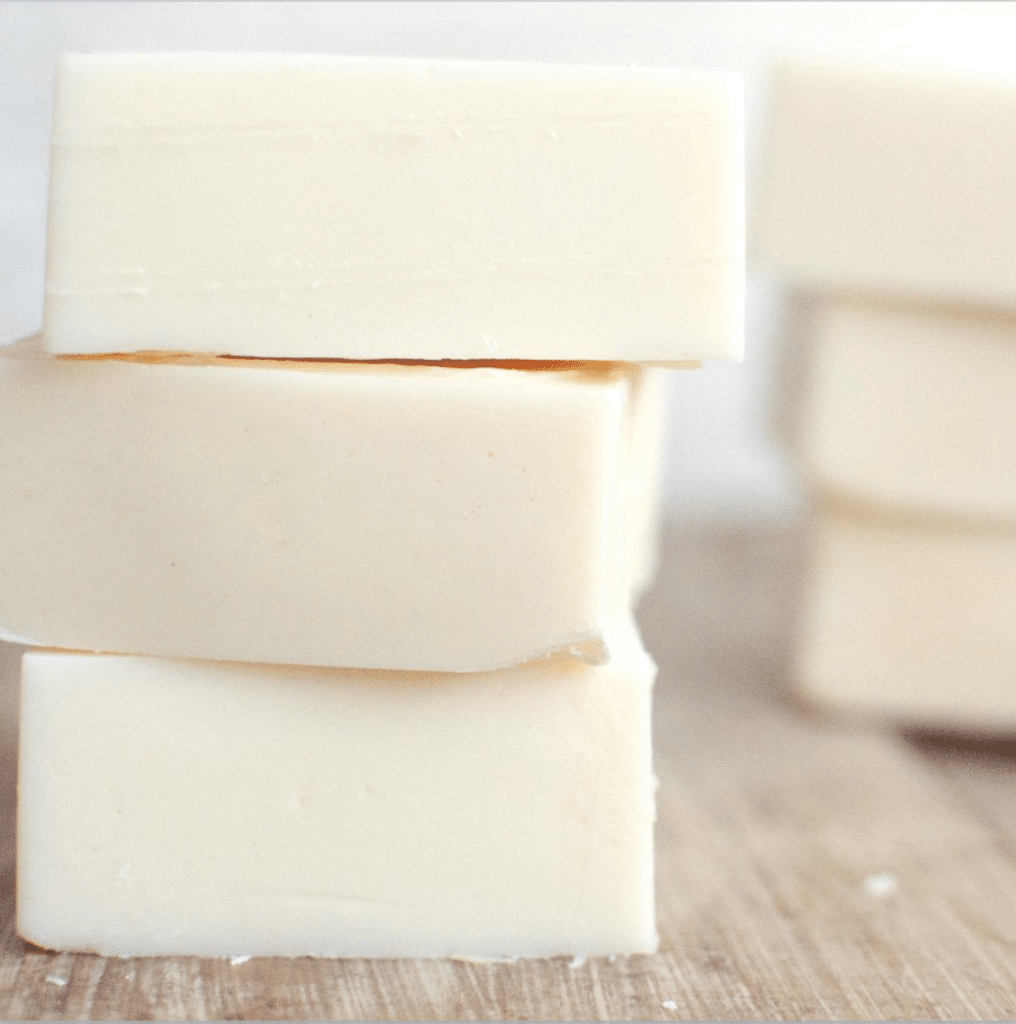
Here is why I’m not afraid to use tallow in my soaps (and you shouldn’t be either):
Why You Should Use Tallow?
Tallow Is GOOD For Your Skin
As is the case with our skin, tallow is mostly saturated fat. Tallow’s fatty acid profile consists primarily of oleic, palmitic, and stearic acids. Oleic acid is a fatty acid that is also found in our sebum. It gives tallow its softening, soothing, moisturizing properties and makes it more easily absorbed into our skin. Palmitic acid in tallow works to combat aging and smooth skin.
Naturally derived stearic acid will help protect your skin by forming a natural barrier to keep moisture in and contaminants out. Conjugated linoleic acid is present in higher concentrations in tallow from grass-fed beef (one of the reasons grass-fed beef is so wonderful for our diets). CLA’s in your skincare not only help to retain moisture but also have anti-aging properties as they work to renew skin cells and repair collagen.
Tallow Is a Homesteader Fat
As a homesteader interested in local eating while living in the Middle of Nowhere, America, it leaves me limited in my “self-sufficient” fat choices. Basically, all I’ve got to choose from are animal fats such as tallow and lard. When we raise our own meat, we are able to respect the whole beast and use as much of it as possible so as not to allow any to go to waste.
Rendering the fat into tallow or lard for cooking or soap making or candle making allows us to do just that. Unless you’re a vegetarian, there ought to be nothing disgusting about the thought of using tallow in your skin care products. If you are vegetarian, well some make the case that it still is not disgusting.
Tallow is a Responsible, Environmentally Friendly Choice
But most folks don’t think in terms of using as much of the animal as possible. Beef & pork fat is a by-product of meat production by most standards. So while many soaps are marketed & touted as being vegetarian, using vegetarian soaps doesn’t actually save a single animal’s life. In fact, ironically they are the ones that are taking animal life!
The most popular vegetarian soap fat, palm oil, is very economical, in high demand, and is detrimental to the habitat of wild animals living in those areas where it is grown. Now, please don’t confuse me with being an environmentalist, tree-hugging, greenie. What I am is a Christian stewarding this earth and as such, I need to look beyond the view from my barn door and consider the impact of my choices on all of the Lord’s Creation! So I say use the beef fat that was going to find its way to filling a landfill instead!
Tallow is Economical
Because it is a by-product of butchering and because of the low demand, tallow is inexpensive. Some people are able to get it for free just by asking their butcher to set some aside! If you were able to raise your own beef and redeem the fat for tallow, all the better! So not only is the initial purchase of the fat cost-effective BUT using tallow in your soaps hardens them, making them last longer!
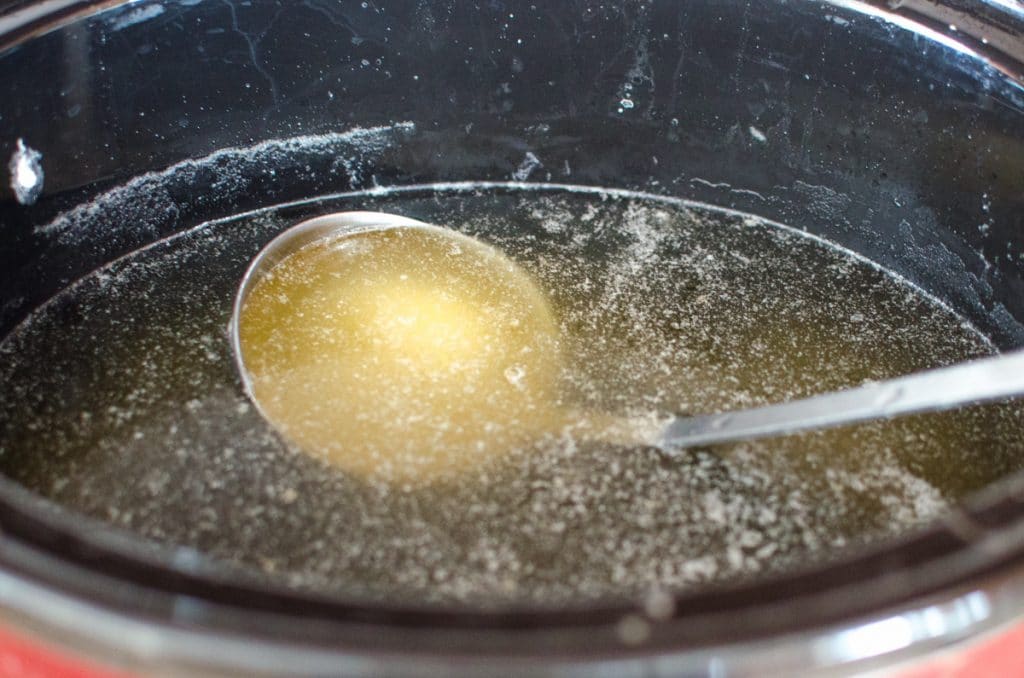
How to Purify Tallow for Soap Making
Time needed: 2 hours
- Find a Source for Beef Fat
That should be pretty easy if you raise your own beef. If not, start calling around local butchers and ask if they have any available. Either freeze it for later or render it within a few days of butchering.
- Cut the fat
Beef fat is a lot easier to cut than pork fat. It’s not as greasy and your knife won’t slip as much. Alternatively, if there aren’t a lot of sinews, you can run it through your meat grinder. The grinder is my favorite option because I find that the smaller pieces render down more thoroughly and you have less risk of accidentally burning the fat.
- Melt (Render) the Fat
Fill your crockpot with the cubed or ground fat. Add a cup of water or so and about a tablespoon of salt. I eyeball it. The water will keep it from burning and the salt will help to draw out impurities. Cover it and set the crockpot on low if you’ll be busy & can’t babysit it. Or high if you are in a hurry, will be nearby, and can stir it frequently. Even on low, be sure to stir it every now and again to break up clumps. Clumped-up fat won’t render down and while you’re waiting for it to do so, the outside will burn.
- Strain the liquid tallow
Using a coffee filter, double-layered butter muslin, or a milk filter, strain the – are they called cracklings in tallow too? Strain the leftover bits of fat that won’t render down from the good stuff. You can either do this at the end or strain it as it renders down. I strain it as it renders. That way, I do not lose everything if I accidentally burn it.

- Refrigerate
Once all of the liquid tallow is gathered from this batch, pour the jars out into a bowl or stock pot large enough to hold all of it. Don’t refrigerate it in the jars! We are not done yet. You can’t do the next step using mason jars.

- Un-mold the tallow
Once the tallow has completely chilled and solidified, use a knife to loosen the sides. Invert the bowl over your kitchen sink (the water you added to the fat has separated and will splash all over the place.) Then pop out the tallow. If you used a stockpot, bring the kids over, torture them briefly, and tell them you baked a cake. (What? You haven’t done a practical joke before? Well, good for you!)

- Scrape off the sediment
What you’ll find on the bottom of your tallow loaf is that all the sediment has settled to the bottom of the pot as the tallow hardened. Now you can easily use your knife to scrape it off and discard it. (If you’d like. Personally, I wouldn’t have any problem saving it for cooking any more than I would have problem saving bacon grease. Have you ever had chicken fried in tallow? No? Then you haven’t had good fried chicken!)

- Repeat
Yes, I know. Just when you thought you were done! It is necessary to purify tallow. It’s not nearly as much work this time. Use your knife to chunk it up. Size doesn’t matter too much, it will all liquify this time. Cook it in the slow cooker on low for a couple of hours with water and salt again. Strain, refrigerate, un-mold, and scrape. This time you should have less sediment. If there was hardly any, you can stop. You might want to do it a third time if you find it necessary.

When I’m done scraping for the final time, I chunk it up into cubes once again. Then I weigh it out into soap-recipe-sized portions, label it. I keep it in a plastic bag in the fridge until I’m ready to make soap. This is much easier and less time-consuming than trying to chisel out the hard tallow from a mason jar!
There are also some important questions about soap making like how to make a gardener’s soap and how to remove soda ash from it.
If you aren’t interested in rendering your own tallow or making your own soap but would like to reap the amazing benefits for your skin, you can buy a bar of nourishing, long-lasting tallow farmstead soap to try for yourself!


Last update on 2024-04-17 at 16:30 / Affiliate links / Images from Amazon Product Advertising API
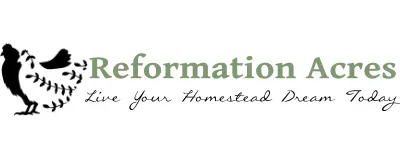
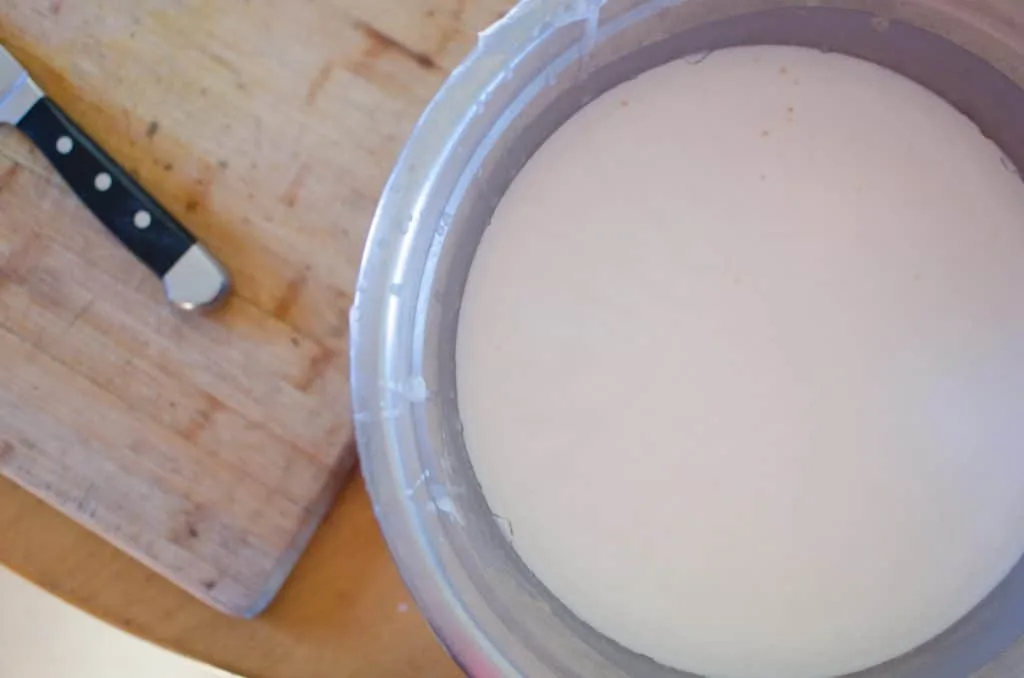












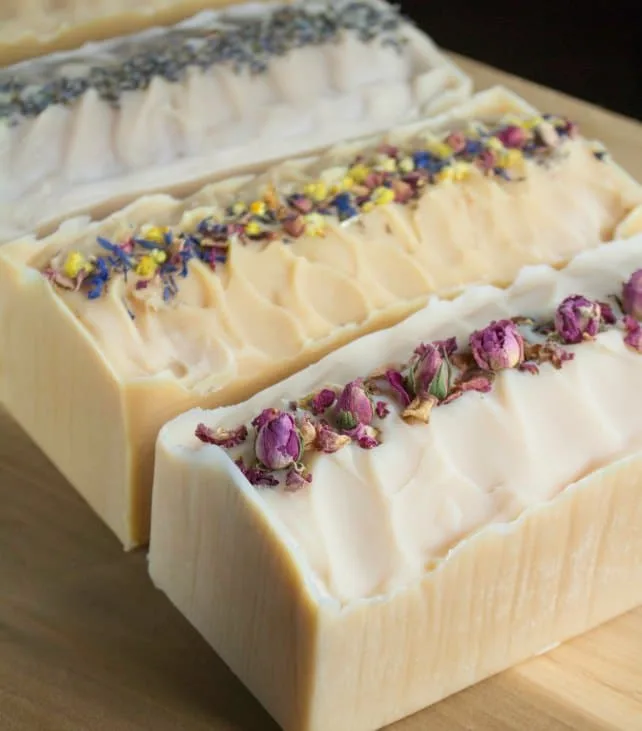

Awesome articles!! Thanks for the tallow instructions. Very clear and concise!!
I was also terrified of pressure canning, but it is almost easier than water bath.
God bless you…
I’m glad you found the article helpful and also that you are no longer terrified of pressure canning.
Hi Quinn, Thanks so much for this post. Maybe I’m trying to do too much, but I started cooking my dogs food again-diagnosed with kidney disease and every prescription food has chicken which makes him sick. I figured if I have to cook so much beef for him now (and honestly I don’t think to buy it as I love chicken and turkey myself) I wanted to save that fat if I could to make soap and or lotions with it.
Wondering what you think of this as a rendering process. I’ve been cooking his ground meat in water, straining and getting a nice little cake. Could I add salt in the next phase instead? Maybe I’ll lose something (nutrients?) but I don’t want to hurt my little guy by adding with salt in the meat just for my soaping/lotion tests. Sodium is really hard on the heart and kidneys. Thanks in advance, I can’t seem to find this answer anywhere. – Mary
Hello Mary. Thanks for your question. You may be able to do this and add the salt later, but here are my thoughts. By boiling the meat with it, you may be adding impurities in, when we want to be taking them out. Typically when rendering, you remove any meat before putting the fat in the pot and only boil down the fat. The added water is clean to start with. I have not tried what you are suggesting, so all I can say is give it a try and see if your tallow comes out clean. If you can get the impurities out of it, you can use it for soap. If you do try it, let me know how it goes.
Thanks for this great post! I have been rendering tallow for years, but I didn’t know how to purify it until I read this post. I tried it, doing the process that you showed here three times, and the result is like ghee. It’s great! I have one question, though: it is still very soft at room temperature. It’s the consistency of grass fed kerrygold butter at room temperature. Do you know why this is? It would definitely be too soft to make candles. I am using fat from 100% grass fed, grass finished beef. Do you think that makes the fat softer at room temp, compared to fat from cattle fed grain? Thanks!
Thanks for the post. I rendered about 10 pounds of tallow from our cattle, and even though the tallow is hard and white and clean, it has a strong tallow smell. I’d rather not add lots of scent to mask it – – do you know of a way to reduce the smell?
Это было и со мной. Давайте обсудим этот вопрос.
—
В этом что-то есть. Понятно, спасибо за объяснение. скачать fifa 15 на компьютер через торрент, fifa 15 скачать на айфон или ползунки fifa 15 fifa 15 moddingway скачать торрент pc
I’m going to buy grass feed beef fat and try rendering my own tallow using your instructions. Have you ever had problems with dreaded orange spots developing on your white tallow soaps?
I have never had that happen. (Never heard of it actually.) I’ll get the occasional soda ash in the winter, but that’s it.
So happy to find this post. I made soap and candles from tallow for years. Had 2 beautiful books giving such great ideas for molds and fragrances etc. Lent my books out to a “friend” with the promise of being returned. I shall say no more. She moved away books and all. Well now we have the internet. Yay
Sorry to hear that! I hate losing a good book too! Thanks goodness for the internet though- yay!!
This is awesome reading and good to know as I dive into cp. I also reviewed your Etsy store and it is awesomel!
Is beef fat actually cut from amongst the meat cuts (the jelly like stuff interlacing the muscle) or is it the stuff you get after cooking meat: all the fat that cooks out and hardens on top when it cools? Can I use that for tallow? If so, can I be collecting it as I cook meat cuts, freeze it, then render it all at one time?
Thanks, looking forward to the tallow soap recipe!
The fat I’m using is cut from the meat during butchering. It’s not really jelly-like at all. It’s quite dry (especially compared to pork fat) and can be crumbly. Now I want to think that years ago Kendra from New Life on the Homestead did a post about how she collected beef fat after cooking and used it for making candles and her thoughts on that… Might be something to Google. I haven’t tried it myself.
Can’t wait to try. Very motivating 😉
I’ve rendered tallow before but I haven’t done the cool in the bowl and scrapping. I also think that premeasuring the tallow is a great idea. You’re right about the pain of chiseling out tallow from a jar! I’m going to do your method next. I have some suet in the freezer and need to make room for a quarter cow that we’re picking up tomorrow. I use the tallow for lotion bars (I use Wardeh’s recipe). I’ve used it for chapstick, too. My husband and sons oil their boots with it. I’ve also used it for frying sourdough onion rings (yummy!). Do you have soap making supplies designated only for soap making or do you use kitchen utensils?
No tallow going to waste in your home! Awesome!! I do have separate tools for soap making. Err.. well I’m supposed to. Things go missing around here often and I’ve been known to raid the soap making supply box for a thing or two if need be. 😉
This is great. We’ve rendered a ton ( okay maybe not a whole ton) of lard and recently butchered our first beef and made tallow. I didn’t know about the salt though, so back to the drawing board I go. Thanks for the tip.
If you’re storing it in the fridge or freezer and plan on using it for cooking, I wouldn’t worry about it. I don’t go to any extra trouble for our lard.
How to purify tallow if it is in bulk quantity?
When I need to do a lot of tallow, or lard, I have used a turkey frier. Grinding the fat first helps speed the process along as well as rendering more out without it cooking. The large pot allows for larger quantities as well as the rendering can be done outside so the smell and mess is outside.